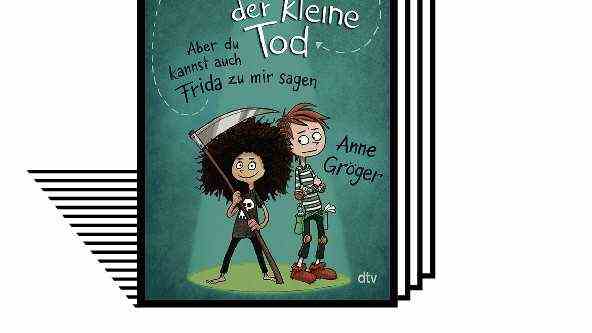“This is a matter of life and death.” So the title of the first chapter and the first sentence with which the screenwriter for film and television Anne Gröger begins her first “children’s book”. The whole story is about life and death – 200 pages long. It is told from the perspective of the eleven-year-old boy Samuel, who has lived in a hospital for many years. “As long as I can remember, I’ve been sick.” Since he was born, his immune system has been “ready for scrap”. It has “no huge walls and no proper alarm system, as it should be. No, my immune system only has a riddled old fence and says to every pathogen: ‘Welcome!’ That’s why I live in the hospital. It’s just safer. “
But now a new therapy (“I have had new stem cells transplanted”) is surprisingly successful. “You can go home”, the doctor explains with a happy smile, and “you can lead a normal life”. The parents are beaming. But her son is not happy. The memories of earlier, almost fatal phases of illness do not let go of him. “I almost died exactly seven times. Five times from pneumonia. Twice from internal bleeding.” The last time he had seen death before him in a dream. “I opened my eyes and stared at him. Right in the face. That is, if there had been a face. But I only saw black.” His also sick friend Tobi encouraged him: “Samuel! You won’t die!” But Tobi was crying. This touched Samuel in such a way that it strengthened his own survival power. He was recovering from pneumonia and “thought that would have made me through the worst day of my life”. But a few weeks later his friend dies … The hospital’s fears of death traumatized Samuel, and the trauma remains at home. He doesn’t dare to leave his room or apartment there. “You can’t live like that,” the father says to him and receives the answer: “How I live is my business.” He calls his father “crazy”, who always wants to do something with him. In reality he is a psychopathological case himself.
“If you really want me to have friends, buy me a robot! At least it’s germ-free.”
His anti-contagion activities take compulsive forms. He doesn’t want any new friends. “I have Frank,” he says to his father and points to a little harvestman who is completely harmless, but then makes a suggestion to his parents: “If you absolutely want me to have friends, buy me a robot! At least it is germ-free. ” He constantly cleans his room, always has a “disinfectant spray” to hand, a “protective suit” and a “face mask”. He refuses to go to a playground with his father. Because, he explains, referring to statistics on various types and numbers of deaths, about which he obviously keeps himself informed: An “average child” is “six times more sick and thus a six times larger sprout than adults. From this it follows: Children are life-threatening! ” He doesn’t want to go to school either, but he is “very satisfied with his online lessons”.
The fear of danger, including illness, is an important protection against death and for life. But the book shows the opposite in its protagonist: Fear can become so strong, so pathological that it prevents people from living properly. The boy himself doubts his sanity when he is confronted with the second main character in the book.
Samuel accidentally killed Frank, the little harvestman, with his disinfectant spray. Suddenly he sees a scythe moving through the air and cutting Frank. “That was fun!” So someone cheers behind him. Samuel turns and freezes. In front of him “stands a small figure in a black cloak – with a scythe. It is a” nightmare “, he thinks, passes out, wakes up again, recognizes a little girl, sees her” thinking organ incapacitated, “calls to his mother,” we. ” have to go to the hospital! I’m hallucinating, “points to the” scythe girl “, but her mother can’t see her.
After the mother has left his room again, the girl introduces herself to him with the words: “I am the little death, but you can also call me Frida.” Anne Gröger has made this the title of her book, with minor deviations. And here, after quite realistic beginnings, begins the fairytale fantastic main story of the book up to its end: the story of the relationship between Samuel and Frida, a story full of conflicts and fears, but also of friendship and love. Frida was commissioned by the “great death” to learn together with Samuel what human life is in order to later take on the tasks of the great death herself. And Samuel is seduced by her to expose himself to real life with all its dangers. Up to a beautiful and dangerous mountain hike that his dead friend Tobi had wished for with him.
What Samuel says about it in the book is interrupted by Frida’s entries in her notebook. The last entry ends with the sentence: “I love you, Samuel!” And after a farewell between the two of them, the book ends with the words: “Goodbye, Frida!” (from 10 years and for adults)

